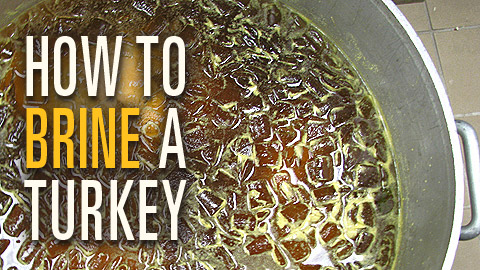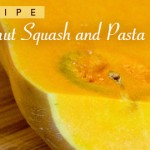Food: Brining a Turkey
Story by Hal Goodtree. Photo by Lawrence Rice.
Cary, NC – If you like a well-cooked but still moist turkey, nothing can beat the age-old technique of brining.
Brining a Turkey
Brine, at its most basic, is just salt and water. The only trick to brining a turkey is that you have to start a few days before Thanksgiving.
Where to Brine?
The other question to answer is where to brine the bird? Turkeys are fairly large and they need to be covered with the brine.
I usually use a lobster pot, but I’ve also used a cooler. Some people use a drawer in the refrigerator. I personally cannot recommend this one – who wants a raw turkey sloshing around in the fruit drawer? – but it does have the advantage of refrigeration. I also advise against using a garbage bag (another popular trick) – bags have fragrance and are not made for contact with food. In fact, some garbage bags are made to breakdown, which means your brining in salt and plastic.
Lobster pot, cooler, deep fryer – they all work well.
Defrost the Bird
You’ll need to defrost the bird before brining. Experts say it’s best to do that in the fridge. Defrosting can (will) take several days, so start now.
Prepare the Bird for Brining
Wash off the defrosted turkey and remove the innards. These days, they are usually in two sacs stuffed into both cavities – the abdomen and the neck.
Most turkeys include a heart, liver and neck but may also include a gizzard. Pull it all out of the bird. Save it if you want to cook it (good for gravy) or chuck it out.
How to Make Brine
The magic formula is one cup salt to one gallon water. I make about 5 gallons.
Boil the water, add the salt and stir until it’s all dissolved. Some folks also add a cup of brown sugar. Let the brine cool.
You can also add a few herbs and spices to the brine – rosemary, bay leaf and peppercorns are good.
If you’re going to use herbs, be generous. When I make it, the top of my brine looks like a dumped a bag of lawn clippings in the pot.
Brine the Bird for a Day or Two
Once the brine is cooled and the turkey cleaned out, place the bird in the liquid breast side down.
I throw in a bunch of ice and let the whole thing stand for a couple of days in the garage.
You want to place something on top of the turkey to make sure it’s completely submerged. Use you imagination.
Flip the turkey a couple of times during the brining and add more ice if we’re having a warm spell (like this year).
Cooking a Brined Turkey
Brined turkeys cook the same as any other turkeys.
Pull the bird out of the brine, rinse it off, season it the way you usually do and roast it breast-side down.
I would imagine you could also deep fry, but I have no info to relate. Just stand back when you toss it in.
Experts say the turkey os done when it reached an internal temperature of 165 degrees F. If you don’t have a meat thermometer, wiggle the leg – it should move freely.
What Not to Brine
Experts say not to brine kosher or self-basting turkeys. These already contain a saline mixture and may come out too salty.
How Brining Works
Brine is a marinade – it gets in-between the cells of the turkey. Water transmits across the membrane into the cell.
The brine also starts to break down the cell structure, preventing the water from transmitting back out of the membrane.
In short, brining locks water inside the cellular structure of the turkey.
Interestingly, the salt does not transmit across the cell membrane. The salty water left between the cells runs out during cooking.
We’ve found that the drippings from a brined turkey may be too salty for gravy. Because a brined bird releases salt, we’ve also found that cooking the stuffing in the cavity is not ideal.
The cooked bird itself is not salty. The effect of brining is to add moisture.
A Brief History of Brining
Thousands of years ago, our ancestors discovered that they could preserve food by packing it with salt. Terra Amata in France, an archeological site in southwestern France, is said to be more than 200,000 years old and show evidence of preservation of shellfish with salt.
In North Carolina, we’ve been preserving hams with salt since at least the 18th century (1700’s).
Along with smoke, salt is how people preserved food before electricity and refrigeration. Not that long ago, really.





Thank you! I’m on my first big turkey brine and this is very helpful!
You are very welcome Leslie! Once we started doing our turkeys this way, we found it to be so moist and tasty, we never do them any other way.
And thanks for reading CaryCitizen!